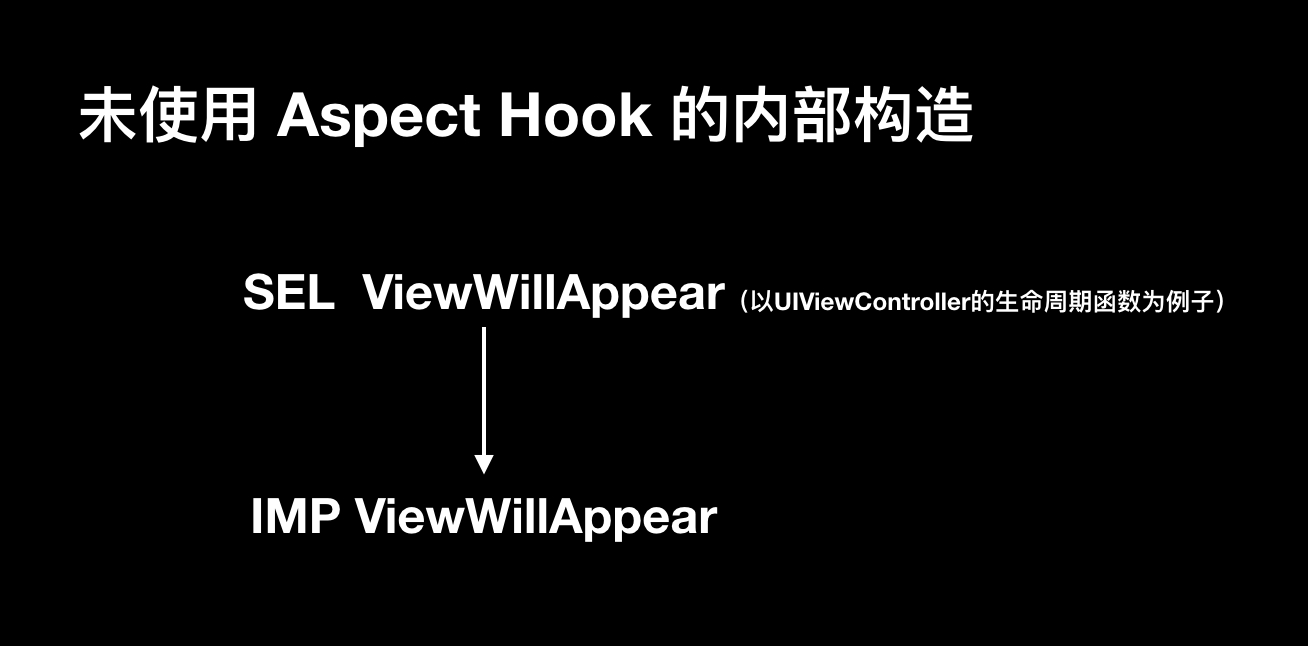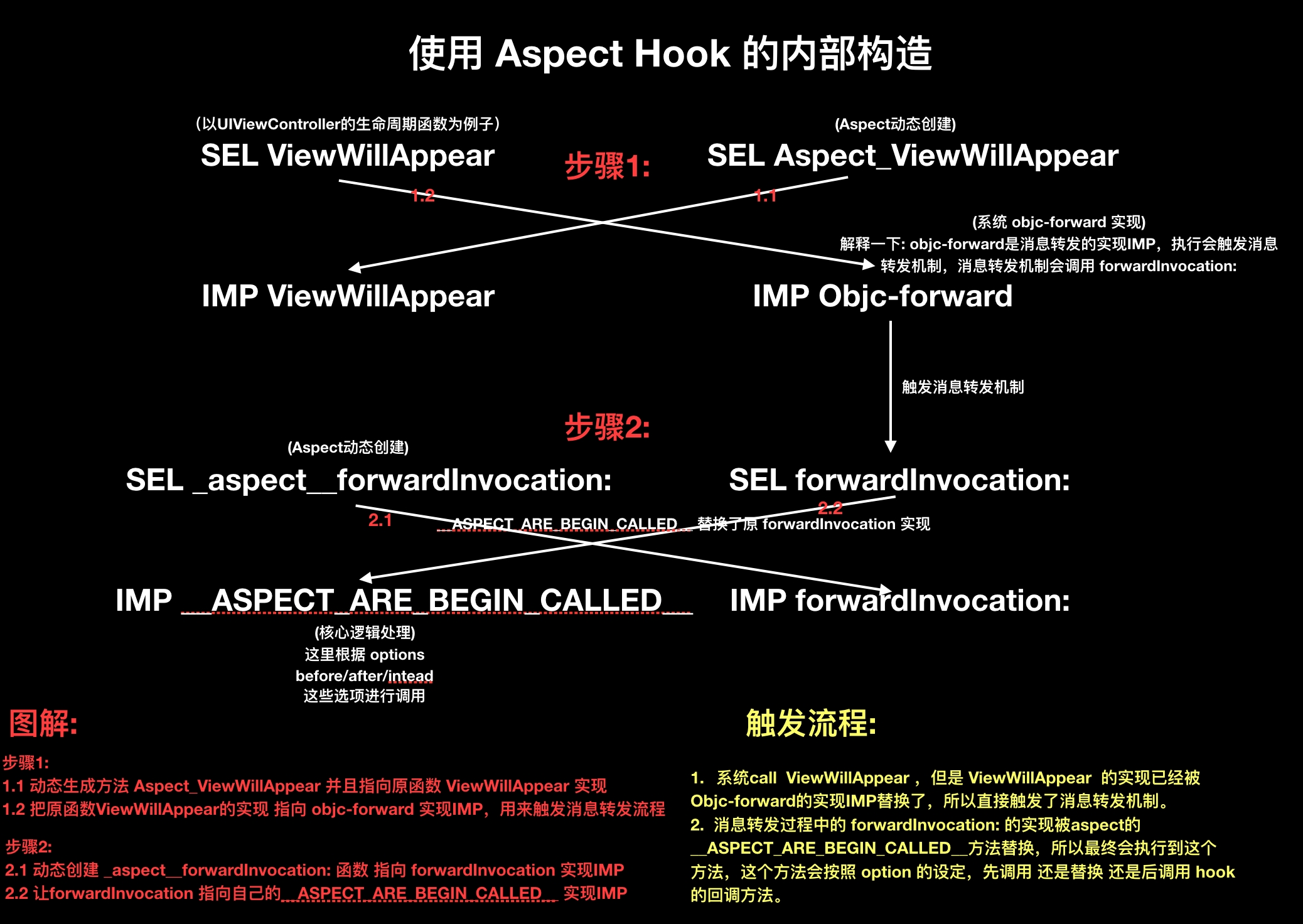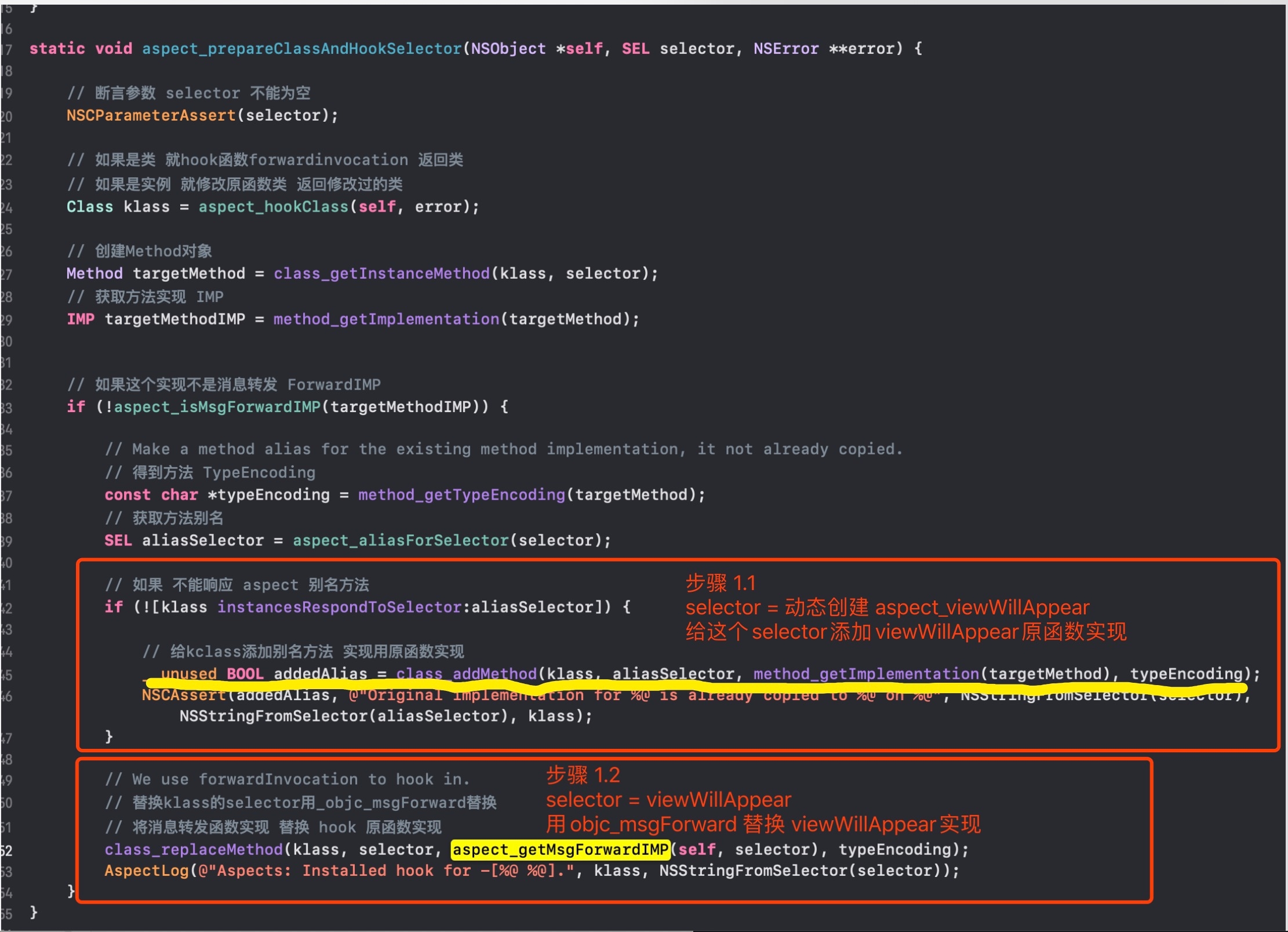// This is the swizzled forwardInvocation: method.
static void __ASPECTS_ARE_BEING_CALLED__(__unsafe_unretained NSObject *self, SEL selector, NSInvocation *invocation) {
// 这里解释一下,为什么会执行到这里。
// 因为 aspect 替换了原函的实现,换成objc_msgForward,所以再调被hook函数会好触发消息转发流程
// 又因为 aspect 用 __ASPECTS_ARE_BEING_CALLED__ 替换了 消息转发流程中的 forwardInvocation 函数
// 所以就调用到这里面来了
// 断言参数 self invocation 不为空
NSCParameterAssert(self);
NSCParameterAssert(invocation);
// 获取 invocation 的SEL方法名
SEL originalSelector = invocation.selector;
// 拼接 别名方法 通过 SEL
SEL aliasSelector = aspect_aliasForSelector(invocation.selector);
// 替换invocation中的调用方法
invocation.selector = aliasSelector;
// 通过aspect别名方法获取关联对象 AspectsContainer
AspectsContainer *objectContainer = objc_getAssociatedObject(self, aliasSelector);
// 通过aspect别名方法获取关联对象 AspectsContainer
// object_getClass(self) 是 self的isa指向的位置,如果 self 是实例 就指向 类,如果 self 是类 就指向 元类。
AspectsContainer *classContainer = aspect_getContainerForClass(object_getClass(self), aliasSelector);
// 创建 AspectInfo 对象通过 self 和 invocation
AspectInfo *info = [[AspectInfo alloc] initWithInstance:self invocation:invocation];
// 创建 aspectsToRemove变量 待用
NSArray *aspectsToRemove = nil;
// Before hooks.
// 从名字就应该可以猜出,这是我们挂的回调,option = before 在原函数执行之前执行。
aspect_invoke(classContainer.beforeAspects, info);
aspect_invoke(objectContainer.beforeAspects, info);
// Instead hooks.
BOOL respondsToAlias = YES;
if (objectContainer.insteadAspects.count || classContainer.insteadAspects.count) { // 如果 option=instead替换 走这里
aspect_invoke(classContainer.insteadAspects, info);
aspect_invoke(objectContainer.insteadAspects, info);
}else {
// 这里解释一下,这里是调用原函数的实现,如果你看了上面的图解,你就可以完全看懂下面的代码。
// 获取invoke对象
Class klass = object_getClass(invocation.target);
// 如果可以响应 别名函数,循环调用。
// 这里invoke是调用的原函数
do {
if ((respondsToAlias = [klass instancesRespondToSelector:aliasSelector])) {
[invocation invoke];
break;
}
}while (!respondsToAlias && (klass = class_getSuperclass(klass)));
}
// After hooks.
// 这里是 option = after 的hook 被调用
aspect_invoke(classContainer.afterAspects, info);
aspect_invoke(objectContainer.afterAspects, info);
// If no hooks are installed, call original implementation (usually to throw an exception)
// 如果不响应别名函数,调用原函数实现。
if (!respondsToAlias) {
invocation.selector = originalSelector;
SEL originalForwardInvocationSEL = NSSelectorFromString(AspectsForwardInvocationSelectorName);
if ([self respondsToSelector:originalForwardInvocationSEL]) { // 可以响应原函数
// 用 objc_msgSend 给自己发送 originalForwardInvocationSEL 消息携带参数 invocation
((void( *)(id, SEL, NSInvocation *))objc_msgSend)(self, originalForwardInvocationSEL, invocation);
}else {
// 无法响应原函数,调用不识别方法。
[self doesNotRecognizeSelector:invocation.selector];
}
}
// Remove any hooks that are queued for deregistration.
[aspectsToRemove makeObjectsPerformSelector:@selector(remove)];
}




